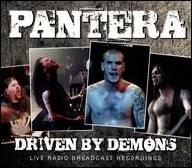At the height of their popularity and influence, Pantera began to self-destruct. Less than two months after the release of The Great Southern Trendkill (1996) -- an album ridden with allusions to drug abuse and personal destruction -- Anselmo overdosed on heroin after a homecoming concert in Texas, and as tensions rose between him and his fellow bandmembers, he began engaging with a growing list of side projects that kept him away from Pantera. A live album, Official Live: 101 Proof (1997), was compiled for release when it became evident that no new studio album was forthcoming any time soon. One final studio album did result, Reinventing the Steel (2000), but that was more or less it for the briefly reunited Pantera. The bandmembers once again went their separate ways, forming such bands as Damageplan, Down, and Superjoint Ritual.
The end of Pantera then became official on December 8, 2004, when guitarist Dimebag Darrell was murdered on-stage by a deranged fan. This much-publicized murder shone the spotlight back on Pantera for an extended moment, and amid all of the emotional outpouring and tributes, a consensus arose: in retrospect, there was no greater metal band during the early to mid-'90s than Pantera, who inspired a legion of rabid fans and whose oft-termed "groove metal" style bucked all prevailing trends of the day -- from hair metal and grunge to nu-metal and rap-metal -- and remains singular to this day, as defined by the vocals of Anselmo as it is by the guitar of Dimebag. ~ Jason Birchmeier, Rovi


















